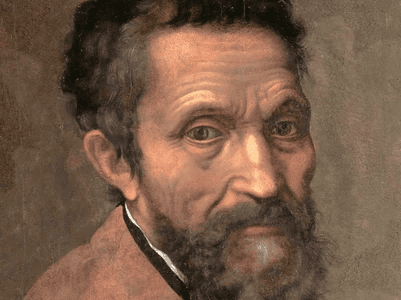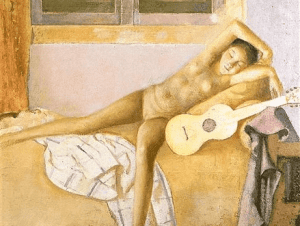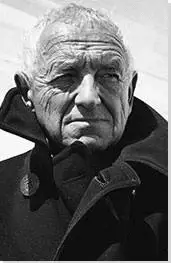(Skip to bullet points (best for students))

Born: 1475
Died: 1564
Summary of Michelangelo
Michelangelo is one of the first real “characters.” in art history. He was a polymath genius who had a reputation for being temper-driven, changeable, and temperamental, despite being being regarded as one of the finest painters of the Italian Renaissance period. He was a member of the ancient Greek and Roman art renaissance, but his contributions were more than just imitations of antiquity. His art was marked by a psychological ferocity and emotional authenticity that had never been seen before, and it frequently sparked debate. Despite his rebellious nature, he was able to secure lifetime patronage from some of the era’s most illustrious figures and make some of the world’s most famous masterpieces.
Michelangelo became adept in anatomy as a result of his early studies of classical Greek and Roman sculpture, as well as his study of cadavers. His bodies’ musculature is so genuinely exact that they’ve been reported to breathe just by looking at them.
Michelangelo’s ability to carve a complete sculpture out of a single block of marble is legendary. “I saw the angel in the marble and carved until I set him free.” he once stated. He was rumoured to be able to generate actual life from stone.
The artist’s fiery and turbulent demeanour has become legendary. He sometimes abandoned projects in the middle of them or used controversial methods to express his pride and rejection of tradition, such as putting his own face on figures in his work, ridiculing his opponents’ looks, or nakedly depicting religious symbols.
Michelangelo’s most famous works, including the Sistine Chapel’s massive painting of biblical narratives, the 17-foot-tall testament to male perfection David, and the heartbreakingly genuine Pietà, are considered some of the world’s most brilliant works of art, attracting large crowds of tourists even today.
Childhood
Michelangelo was born in the tiny Tuscan hamlet of Caprese, near Arezzo, to Leonardo di Buonarrota and Francesca di Neri del Miniato di Siena, a middle-class family of bankers. Due to his mother’s tragic and protracted sickness, his father had no choice but to entrust his boy to his nanny. His father’s marble quarry was where the nanny’s husband worked as a stonecutter.
Michelangelo’s mother died when he was six years old, but he continued to live with the couple, and legend has it that this unusual childhood scenario laid the groundwork for his eventual love affair with marble.
Michelangelo’s father realised when he was 13 years old that he had no aptitude for the family trade. The little kid was assigned to Domenico Ghirlandaio’s well-known workshop as an apprentice. Lorenzo de’ Medici of the famed Florentine art sponsorship family asked Ghirlandaio for two of his top students after barely a year in the workshop. Michelangelo and Francesco Granacci were chosen to join the Humanist academy of the Medici dynasty. Artists were encouraged to study the humanities, enhancing their artistic pursuits with knowledge of ancient Greek and Roman art and philosophy, during the Renaissance in Florence.
Art was developing away from Gothic imagery and religious work and toward a magnificent celebration of man and his place in the universe. Michelangelo trained under the renowned sculptor Bertoldo di Giovanni, gaining exposure to the palace of Lorenzo’s magnificent classical statues.
Michelangelo got permission from the Catholic Church of Santo Spirito to examine cadavers in their hospital in order to get a better grasp of anatomy at this period. In exchange, he made a wooden crucifix for them. This early schooling culminated in his ability to properly portray the actual muscle tone of the body, as demonstrated by two sculptures that exist from that time: Madonna sitting on a Step (1491) and Battle of the Centaurs (1492).
Early Life
Following Lorenzo di Medici’s death in 1492, Michelangelo stayed in Florence in relative safety. However, the Medici family was driven from Florence due to political unrest, and the artist relocated to Bologna. He was commissioned to finish the carving of St. Dominic’s Tomb at Bologna, which included the insertion of a figure of St. Petronius, a kneeling angel carrying a lamp, and St. Proculus.
After the fear of a French invasion passed, Michelangelo returned to Florence in 1494. St. John the Baptist and a tiny cupid were among the statues he worked on. The Cupid was sold as an antique sculpture to Cardinal Riario of San Giorgio. Despite his displeasure at being misled, the Cardinal was sufficiently pleased by Michelangelo’s work to invite him to Rome for another assignment. Michelangelo designed a statue of Bacchus for this commission, but the Cardinal rejected it because he believed it was politically unwise to be connected with a pagan nude figure.
Michelangelo was so enraged that he subsequently instructed his biographer Condivi to record the commission as a commission from his banker, Jacopo Galli, rather than from the Cardinal. The artist’s rash attitude had already earned him a reputation as someone who indignantly did what he wanted, frequently ignoring his patron’s requests or failing to finish work that had been started.
After finishing the Bacchus, Michelangelo stayed in Rome, and in 1497, the French Ambassador, Cardinal Jean Bilhères de Lagraulas, commissioned his Pietà for the King of France’s chapel in St Peter’s Basilica. The Pietà would go on to become one of Michelangelo’s most renowned carvings, characterised by Giorgio Vasari, a 16th-century biographer, as something “nature is scarcely able to create in the flesh.” His mastery of emotional expression and genuine realism in the painting drew a lot of praise and admiration for the artist.
Michelangelo did not get any significant contracts for the next two years, despite his position as one of the period’s most accomplished artists following the completion of the Pietà. However, in terms of money, this time off wasn’t a big deal. The artist’s lifestyle did not appear to be affected by his or her wealth. “However rich I may have been, I have always lived like a poor man.” he would tell Condivi at the end of his life.
The puritanical monk Girolamo Savonarola became renowned in 1497 for the Bonfire of the Vanities, an event in which he and his allies destroyed art and books in Florence, thus putting an end to the Renaissance. Michelangelo would have to wait until 1498, when Savonarola was deposed, to return to his beloved Florence.
His most noteworthy work came in 1501, when he was commissioned by the Guild of Wool to finish a project left incomplete by Agostino di Duccio 40 years before. This effort culminated in a magnificent 17-foot-tall nude statue of the biblical hero David, which was finished in 1504. The piece demonstrated the artist’s unrivalled ability to carve stunningly exact representations of actual life from lifeless marble.
Following David’s completion, he had other painting contracts. In instance, Michelangelo’s only known completed picture, Doni Tondo (The Holy Family), has survived (1504).
Rivalries arose between Michelangelo and his artist contemporaries throughout the High Renaissance in Florence, with each vying for top contracts and renowned social position as acknowledged masters of their crafts.
Leonardo da Vinci rose to prominence rapidly, and his rivalry with Michelangelo was renowned. Piero Soderini, the Palazzo Vecchio’s lifetime Gonfalonier of Justice (a senior public officer comparable to a Mayor), commissioned each of them to paint two opposing walls of the Salone dei Cinquecento. Both of these paintings were never completed and are now gone. When Vasari eventually rebuilt the Palazzo, Leonardo’s The Battle of Anghiari was covered up.
Pope Julius II called Michelangelo to Rome, interrupting his work on The Battle of Cascina in the preliminary drawing stage. Michelangelo was lured by the patron Pope’s flashy reputation, which was enticing other artists like Donato Bramante and Raphael to embark on exciting new undertakings. He accepted the offer, never one to be outdone by his opponents.
Mid Life
Michelangelo began work on the Pope’s mausoleum in Rome, a project that would take five years to complete. Despite this, the artist would leave the project after the Pope persuaded him to take on another assignment. The project was the ceiling painting of the Sistine Chapel, and it is said that Bramante, the architect in charge of the construction of St. Peter’s Basilica, was the one who persuaded the Pope that Michelangelo was the right man for the task.
Bramante was known for his envious nature, and knowing that Michelangelo was more recognised for his sculptures than his paintings, he was confident that his competitor would fail. He believed that by doing so, the artist would lose favour with the public. The commission was grudgingly accepted by Michelangelo.
For the following four years, Michelangelo would work on the Sistine Chapel. It was a demanding task that required great perseverance, especially because the erratic artist had fired all of his helpers save one who assisted him with mixing paint. As a consequence, a colossal work of tremendous creativity emerged, depicting Old Testament events such as the Creation of the World and Noah and the Flood. Despite Bramante’s expectations, it became (and continues to be) one of the greatest works of Western art.
Another notable opponent was Raphael, a young 26-year-old who had come onto the scene and was chosen in 1508 to paint a fresco in Pope Julius II’s private library, a contract that Michelangelo and Leonardo were vying for. Raphael became Michelangelo’s biggest artistic rival as Leonardo’s health began to deteriorate. Michelangelo would frequently accuse Raphael of duplicating his own work due to his skill in representing anatomy and elegance in painting nudes. Raphael hated Michelangelo’s hatred against him, while being influenced by him. In his renowned fresco The School of Athens, he painted the artist with his characteristic pouting look in the guise of Heraclitus.
Following the death of Pope Julius II in 1513, the new Pope Leo X commissioned Michelangelo to work on the façade of the Basilica San Lorenzo, Florence’s biggest cathedral. He worked on it for the following three years before it was shelved due to a lack of funding. In 1520, he was given another project for a Medici chapel in San Lorenzo’s Basilica, which he worked on for the following twenty years. He would also execute an architectural commission for the Laurentian Library over those two decades.
Following Charles V’s sack of Rome in 1527, Florence was declared a republic and was besieged until 1530. Michelangelo fled to Rome fearing for his safety after working for the defence of Florence before to the siege. Despite his sympathy for the republic, Pope Clement welcomed him and gave him a fresh contract for Pope Julius II’s mausoleum. During this period, he was also commissioned to paint the Last Judgement fresco on the Sistine Chapel’s altar wall, a job that would take seven years.
Despite being a late bloomer in terms of relationships, Michelangelo would form the first of three significant friendships at the age of 57, igniting a prodigious lyrical output to add to his roster of creative abilities. Tommaso dei Cavalieri, a 23-year-old Italian nobleman who was not only the artist’s youthful lover but also a lifelong friend, was the first in 1532. Michelangelo described Tommaso as the “light of our century, paragon of all the world.” according to art historian Howard Hibbard. Michelangelo’s intense romance prompted him to write a series of love poems that were so homoerotic in character that when his grandnephew published the collection in 1623, he altered the gender pronouns to hide their homosexuality.
Michelangelo met another long-term love, the widow Vittoria Colonna, the Marquise of Pescara, who was also a poet, in 1536. His devotion for her lasted until her death in 1547, as evidenced by the majority of his creative poems. He also sent her paintings and sketches, including the black chalk work Pietà for Vittoria Colonna from 1546, which is one of the most exquisite to have survived. She was Michelangelo’s sole important female figure in his life, and their connection is said to have been platonic.
He also worked on a variety of architectural assignments during this time, including the Capitoline Hill, the Church of Santa Maria degli Angeli, and the Sforza Chapel in the Basilica of Santa Maria Maggiore. He was also given contracts for two frescoes in the Cappella Paolina: St Paul’s Conversion and St Peter’s Crucifixion.
Michelangelo met Cecchino dei Bracci, the son of a wealthy Florentine banker, when he was just 12 years old, in the Court of Pope Paul III in 1540. Following Cecchino’s death four years later, Michelangelo produced epitaphs that indicate the intensity of their connection, implying that they were lovers. One in particular, which has a vivid allusion, “I can still witness to how kind I was in bed for him. When he hugged, and it is in this that the soul lives.”
Late Life
Pope Julius II suggested in 1504 that the ancient St Peter’s Basilica be demolished and replaced with the “grandest building in Christendom.” Although Donato Bramante’s design was chosen in 1505, and foundations were laid the following year, little progress had been achieved since then. Michelangelo was in his seventies when he unwillingly took up this project from his well-known competitor in 1546, declaring, “I undertake this only for the love of God and in honour of the Apostle.”
Michelangelo continued to work on the Basilica for the remainder of his life. His work on the dome at the Basilica’s eastern end was his most significant contribution to the project. He merged the design concepts of all the previous architects who had contributed to the project, which envisioned a big dome similar to Brunelleschi’s famed dome in Florence, with his own great ambitions. Although the dome was not completed until after his death, the base on which it was to be built had been constructed, which ensured that the design of the dome could not be changed considerably during its construction.
It is still the world’s biggest church, and it is a monument to his creativity and commitment. He continued to sculpt, but only for his own enjoyment rather than for a living. He finished a number of Pietàs, including the Disposition (which he sought to destroy) and his final one, the Rondanini Pietà, on which he laboured until his death.
It’s been claimed that becoming world class in any area requires 10,000 hours of intentional practise. Michelangelo embodied this ideal, having begun his profession as a young child and laboured until his death at the age of 88.
Famous Art by Michelangelo
David
1501-1504

The prophet David is shown as magnificent and naked, with the slingshot he used to slay Goliath draped triumphantly over one shoulder.
The art was commissioned for the Cathedral of Florence by the Opera del Duomo, and was initially intended to be a series of prophet sculptures on the rooftop. Although David’s popularity derives from a famous biblical storey, the statue became more than a representation of the storey; it also served as a symbol for the nascent Florentine Republic’s defiance of Medici authority.
The Creation of Adam
1508-1512

This renowned artwork, which is part of the Sistine Chapel’s enormous masterwork, depicts Adam as a muscular classical nude reclining on the left, with his hand extended toward God, who covers the right half of the picture. His hurry is indicated by his white flared robe and the powerful motions of his body as God rushes toward him. God is surrounded by angels and cherubim, all of whom are wrapped in a scarlet cloud, while a feminine figure, perhaps Eve or Sophia, the emblem of knowledge, looks out from beneath God’s arm with interested inquiry. The green ledge on which Adam is lying and the rocky background form a strong diagonal behind him, highlighting the separation between mortal he and gods.
The Last Judgement
1536-1541

This painting, which spans the whole altar wall of the Sistine Chapel and was commissioned by Pope Clement VII when Michelangelo was 62, is one of the final elements of the seminal structure. It depicts Christ’s Second Coming as he delivers the Last Judgment. It took five years to finish the massive piece, which has over 300 separate figurines. The picture is a flurry of activity centred on Christ, who has lifted his hands to expose his Crucifixion scars. As mankind ascend to their destiny, he looks down on their souls. The Virgin Mary, on his left, casts a gaze toward the rescued.
BULLET POINTED (SUMMARISED)
Best for Students and a Huge Time Saver
- Michelangelo is one of the first real “characters.” in art history.
- He was a polymath genius who had a reputation for being temper-driven, changeable, and temperamental, despite being being regarded as one of the finest painters of the Italian Renaissance period.
- He was a member of the ancient Greek and Roman art renaissance, but his contributions were more than just imitations of antiquity.
- His art was marked by a psychological ferocity and emotional authenticity that had never been seen before, and it frequently sparked debate.
- Despite his rebellious nature, he was able to secure lifetime patronage from some of the era’s most illustrious figures and make some of the world’s most famous masterpieces.
- Michelangelo became adept in anatomy as a result of his early studies of classical Greek and Roman sculpture, as well as his study of cadavers.
- His bodies’ musculature is so genuinely exact that they’ve been reported to breathe just by looking at them.
- Michelangelo’s ability to carve a complete sculpture out of a single block of marble is legendary.
- He sometimes abandoned projects in the middle of them or used controversial methods to express his pride and rejection of tradition, such as putting his own face on figures in his work, ridiculing his opponents’ looks, or nakedly depicting religious symbols.
- Michelangelo’s most famous works, including the Sistine Chapel’s massive painting of biblical narratives, the 17-foot-tall testament to male perfection David, and the heartbreakingly genuine Pietà, are considered some of the world’s most brilliant works of art, attracting large crowds of tourists even today.
Information Citations
En.wikipedia.org, https://en.wikipedia.org/.
Recommend0 recommendationsPublished in Art History, Artists







Responses